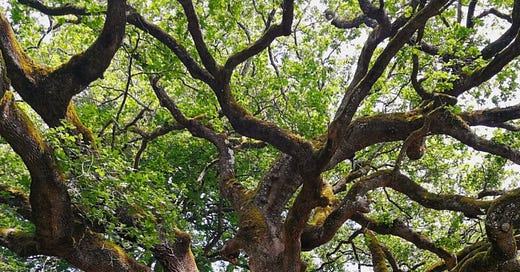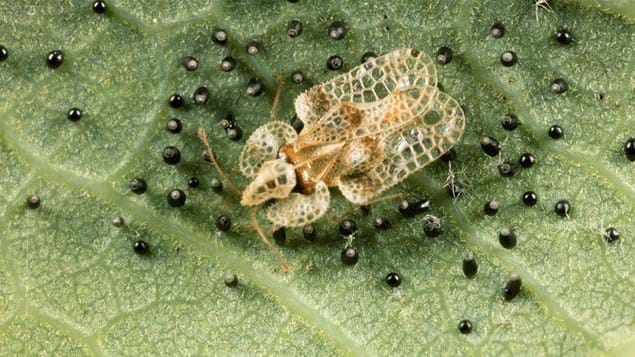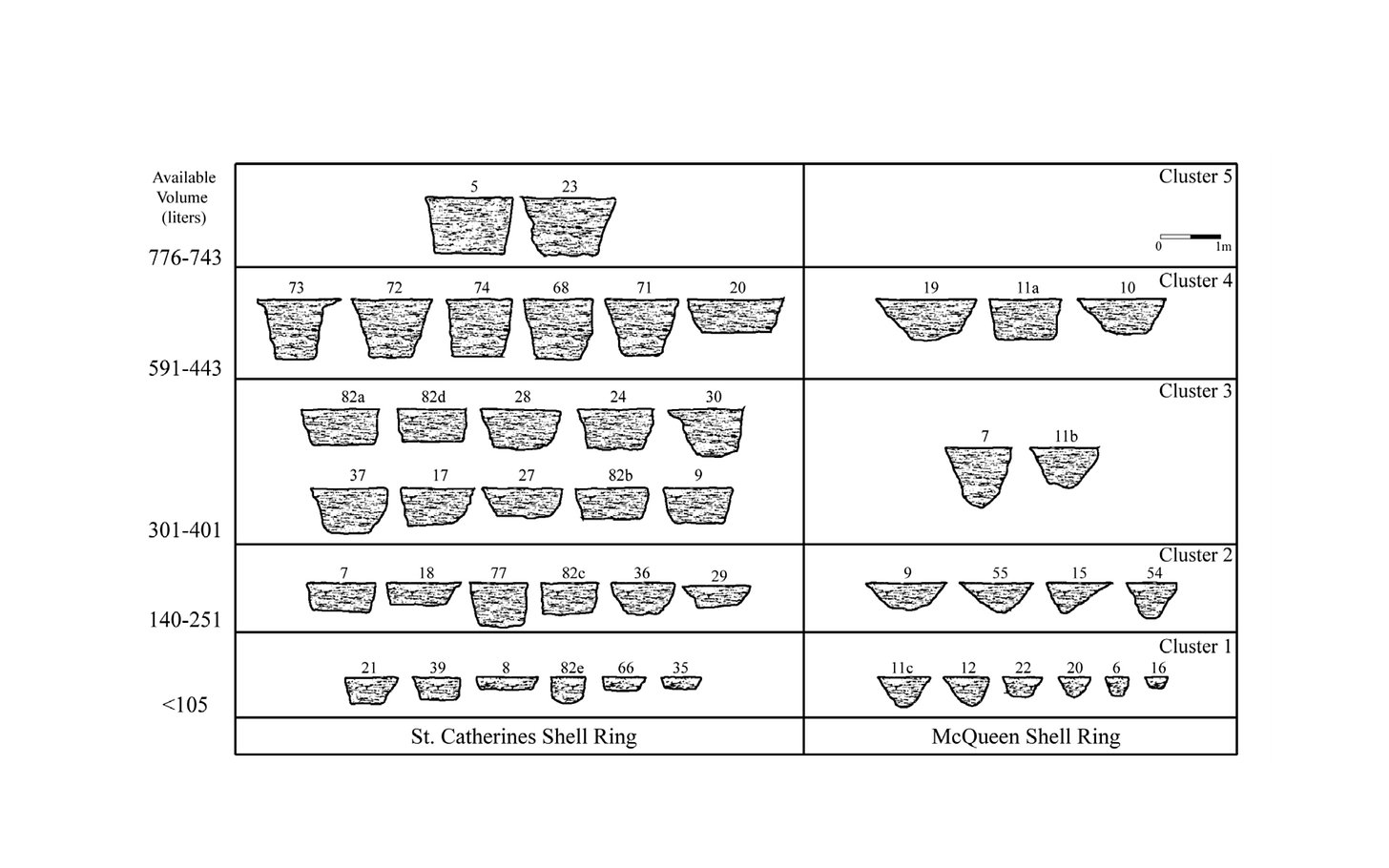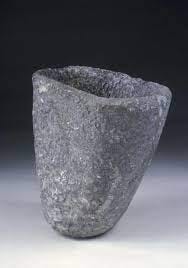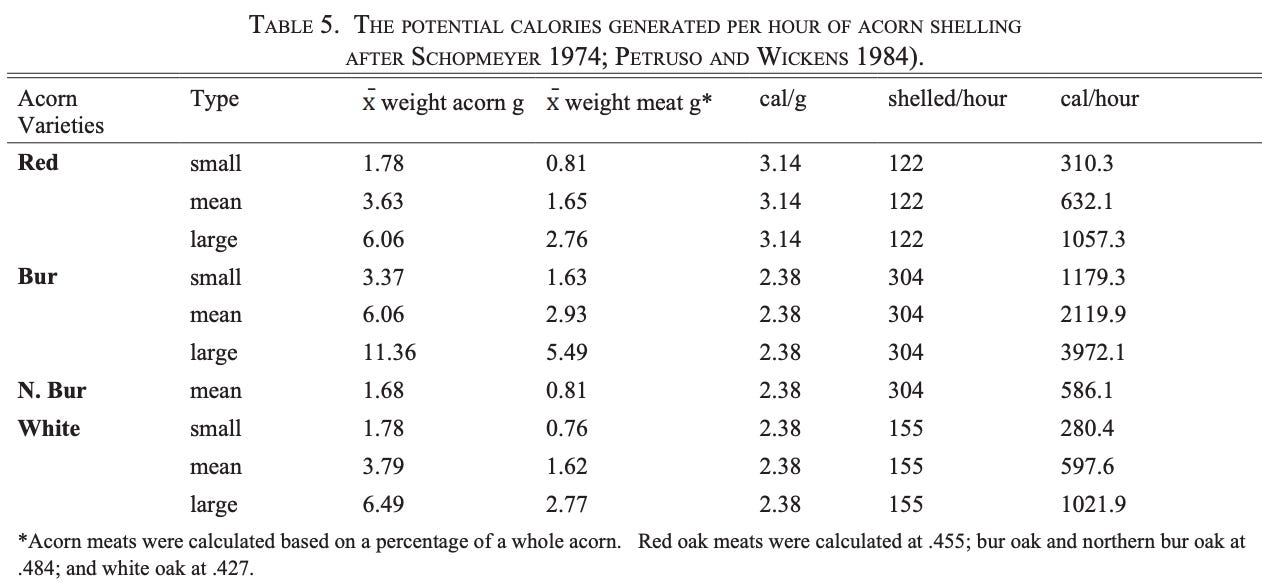The Quercus genus is arguably the most important genus for all living things on earth, including humans. Spanning 55 million years, five continents, over six hundred species, including over ninety of which are here in North America, the oak tree is a central figure in folklore across the globe.1,2 Found as both deciduous and evergreens, as massive keystone trees in forests, and as small shrubs, it’s no surprise that the ubiquitous oak is a foundational part of human existence. Oaks provide us with food, firewood, building materials, tannins for processing the leathers that shielded us from the elements, and feed for the animals and fungi we also consume. Our existence is predicated on their existence, and that’s clearly manifested in its cultural significance, from the names of places (such as Oakland) to its central role in religions (such as paganism).
This long and complicated tale is worthy of much better research than I can provide here, but my hopes are to highlight some of the more subtle and forgotten parts of our shared history. For a deeper dive into the value of oaks in our landscape, and why it’s so pertinent to protect them in our own neighborhoods, I highly recommend Doug Tallamy’s wonderful work The Nature of Oaks.
As humans learned to steward the landscape for their ideal conditions, oaks were there, whether it was the hot, dry dehesas of Spain or the cool, wet New England coasts. The cork oak provided crucial shade during the dry spells and stood strong in the summer’s heat, while the white oak relied on its thick bark as burn cycles were applied to regenerate the forests in the image that supported the most wildlife.
Feeding the Forest
Doug Tallamy has arguably led the most important research around the value of oaks for native ecosystem resilience in North America in the 21st century. His studies have shown that oaks are by far the most important plant in any ecosystem, with evidence showing that oaks support over 400 different insects, which are the basis of our food web. Across the board, oaks have been documented supporting over 4300 different life forms, and it’s possible there’s still more to be found.3
Despite being a wind-pollinated species, evidence has shown that their pollen is also crucial for native pollinators in cooler parts of North America.4 They provide habitat for a number of insects, provide crucial duff layers in North American forests for a wide array of micro-organisms, and stand as often the longest-living tree in many forests. Many oaks are fire resistant, playing a crucial role in ecologies where fire is the norm (much like most of North America). By many standards, the oak tree meets almost all of the needs of ecosystem health.
But what about humans?
Acorns
Acorns have a tenuous relationship with modern humans. Cracking and popping beneath our car tires in the fall, collecting around our windshield wipers, and inviting chipmunks and squirrels to come ever so closer to our personal space as they hurriedly store away calories as winter creeps in, they’ve become more of an “acceptable nuisance” rather than something to be celebrated. Our history, however, has a complex historical component to it that is often ignored and, I believe, one area of exploration that deserves more attention in the space of wild foods.
When my daughter was six, I decided to have her help me collect acorns, separating the edible from those infested with maggots. We collected a five gallon bucket, brought them in the house, did the float test, and cracked them at our kitchen table with a hammer, one at a time. Over the course of a few hours, we had collected a couple gallons of acorn meat— but we had only just begun. Like many wild foods, their edibility is entirely predicated on the processing of the plant material.5 What that processing looks like, however, has a complex historical component to it, however.
The primary reason why acorns need to be processed further beyond simply shelling the nutmeat is because of the tannic acids. These tannic acids are also a large reason why acorns are plentiful enough; they are difficult to digest by generalists like humans because of the tannic acids, which also act as a preservative. Removing the tannic acid has been done in different ways by different communities across the globe, and in many places, the ancestral practices are still alive. For example, in central California, the shells were cracked open with a stone over another heavy, flat slab of stone like an anvil, and the nut meats were ground with a mortar and pestle. From there, the tannic acids would be removed using the method most popular today, running water. They would be dipped into a stream for a week or more until the tannins had been removed.6
Comparatively, in the Pacific Northwest, the whole acorn, with or without the shell on, was buried in mud or placed in a stream for weeks to months to remove the tannins. Many times, boiling took place afterward to remove any remaining tannins. These processing differences, however, seem to be correlated with the significance of the acorn as a staple crop— areas where it was a staple crop always removed the shell before attempting to remove the tannins.
You might notice in the graphic that the Southwest seemed to eat them without any leeching, which is interesting, right? There’s no doubt that indigenous people found and revered oaks with low-tannin acorns— it cut down on the significant processing time for a staple crop. Wars were fought over access to certain trees, according to indigenous records. While the southwest— including California— are home to more ‘sweet’ acorns than much of the country, it seems that there is a high probability that historically there were significantly more ‘sweet’ acorns in this area than the rest of the country. Here, acorns were eaten raw, roasted, boiled whole, or ground into a meal to make other boiled dishes similar to other regions.
It’s also worthwhile to note that much of the north used lye for processing the acorns. Lye is a traditional food processing agent across the globe; historically this was wood ash, which was also a common ingredient to make corn completely edible for humans, a process known as nixtamalization (more on this later). Lye is highly soluble in water and produces caustic basic solutions, which effectively remove tannins and make many foods more edible for humans. Lye is used in preparing a number of foods we still eat today, from olives to pretzels. Despite our continuous use of lye in processing foods, it has not been a common way for acorns to be processed in the foraging community.
Now, while we will be focusing primarily on acorns in North America, it’s worth noting there’s a history of eating (after boiling) acorns in Japan, eastern Europe, and even around the Mediterranean (often without boiling or otherwise processing specifically for tannins). Again, the oak existed as a keystone species across the globe, and as such, has played a significant role in the diets of almost all of our ancestors.
The American Woodlands
Contextualizing the oak tree in the American woodlands is difficult. We first have to understand how the oak arrived, which was only possible due to genetic sequencing, which has only been available relatively recently. While we don’t know where the first oaks humbly sprouted its first leaf, we do know the oldest record of oak trees began in modern Austria nearly 56 million years ago.7 Until the ice age, these trees scattered and evolved across the globe. It was only then that they retreated back to the equator, unable to continue sharing genetics across the great ocean, and this is where we see the beginning of the modern oak varieties we know today. The rapid cooling made many of the northern species go quickly extinct, and this thinning of the genetic pool allowed for basically two groups of oaks to exist— the American continental oaks and the Eurasian.
In the United States, these oaks were further broken down into eight main lineages, three of which were endemic to the Americas; the red, golden cup, and the southern live oaks. Nearly 20 million years later, as the climate returned temperate weather to the majority of the American continents, the red and white oaks staked their claims on the landscape. In this process, the natural landscape of North America divided the red and white oaks into lineages reflective of their new homes, which is evident today; the west coast oaks are markedly different than the southeastern, which are also different from both the drought-tolerant Texan oaks, which are a stark contrast to the northeastern oaks. Again, thinking back to the processing graphic above, we can see an almost mirror image of these lineages in how they were traditionally processed.
“Increased ecological opportunity allowed oaks to undergo an adaptive radiation, in which nascent species rapidly fill spaces that other species are not occupying. In doing so, these young populations became more ecologically distinct from one another, thereby limiting the movement of genes between them. They became reproductively isolated, so that genes moved less between separated populations than among trees within populations. Subsequently, new genetic mutations and rearrangements could accumulate that distinguished the populations from one another. Through this process, they became new species.”
-Dr. Andrew Hipp
This diversity plays out in how the oak tree has been managed between continents, from prescribed burns to pollarding and coppicing and everything in between. Here in North America, prescribed burns were the most impactful force in managing the ecosystem for oak habitats.
The Mast-Based Economy
Talking about acorns and traditional practices around acorns as a food source invariably leads to captivating images of hunter-gatherers collecting nuts in the fall and processing them in their local community, for their community. However, new research suggests that masts years, those seasons in which oaks and other nut trees drop a significantly higher amount of nuts, helped spur economies based on this surplus. Late Archiac (2800-1200 BC) evidence was found on St. Catherines Island, Georgia of massive subterranean storage, predominantly for hickory nuts and acorns.8
The evidence from St. Catherines Island offers us a deep dive into how these underground storage facilities worked, there’s evidence of similar features across the Northeast, suggesting that these techniques were used by a number of tribes, even if not for mast crops. While many of these subterranean storage facilities may not have actually been for long-term storage, like shallow pits and those with fragments of cooked food or shells, the idea that a simple technology to store the surplus of harvests is a rational assessment as hunter-gatherers had built robust long-distance trade across the east coast. It’s also worth acknowledging that this period of time was transitory for indigenous tribes across North America, as regional, cosmological gatherings had begone taking place across the southeast, alongside trans-egalitarian social structures.9,10
To put the volumes in the above graphic into context, based on the average caloric content of acorns in that area, the largest pits were capable of storing enough food for two people for a year, based on the pit being 70% full. St Catherines Island is estimated to have up to 500 pits; the largest being for storage while the smaller ones were likely used for processing. This would have an estimated 180,000 liters of storage capacity. To put this in full context, using that same 70% full estimate, this one site could store enough acorns to feed roughly 550 people just acorns for an entire year.
This isn’t the only evidence we have of storage of acorns; evidence of steatite vessels (soapstone bowls— pictured below) have been found across the Eastern Woodlands of North America dated to the later half of the Late Archaic from 1800 through 600 B.C., although there have been some dated as far back as 3800 B.C., overlapping with these subterranean storage sites and offering another example of ways in which masts were a focal point of food systems across the temperate woodlands of North America.11 While many were used for cooking and processing acorns and other nuts, researchers believe that these were also used for short-term storage as well.
This timeframe is significant for a number of reasons; 3500 - 1500 B.C. also coincides with peak oak pollen percentages for parts of North America.12 To be clear, this doesn’t mean that oaks necessarily made up a vast majority of the forest, but rather that the percentage of oaks in relation to other periods was higher. Some estimates put, for example, land stewarded by the Anishinaabe in northern Michigan close to 50% oak forests.13 When the distribution of archaeological sites are compared to habitat types it is apparent that archaeological sites are over-represented in potential red oak habitats and underrepresented in lowland cedar/hemlock habitats. What this means is that where people lived, oaks lived; which one came first is irrelevant, as one could not thrive in such strong numbers without the other.
These bowls provide evidence of the significance of acorns in the diets of indigenous peoples across the east coast— not just because they provide evidence of investment in processing acorns but also because these bowls traveled far from their place of origin, suggesting that people valued the capacity to easily process acorns so much they were willing to carry these heavy bowls across vast regions. Lastly, the bowls offer a sense of the scale of trade that existed, based on the need to process acorns and other foods, among both nomadic and semi-nomadic peoples.
Acorn Processing
Storability is also important within the context of processing. Traditionally, processing was a communal activity, due to the massive amount of work that went into processing. If we recall from the map of North America above, different regions process acorns in different ways likely as a response to the unique characteristics of the acorns where they lived. For someone looking to process acorns for the first time, this is likely a good place to start.
Generally speaking; there are two primary methods to process acorns— utilizing a long water leeching process or through nixtamalization. The first is far more recognized as the ‘traditional’ practice, despite the fact that, as you can see in the graphic, it was only common as a sole practice on the west coast. The general idea is this— when the acorns are shelled (or completely crushed), soak them in water— running or not, for a number of days. If the water isn’t running, replace the water daily or twice a day to remove the tannic water, allowing the acorns to continue to process (and not ferment, although that is another practice that is more common in Asia). Depending on the type of oak, this process can take a few days to a few months. When the acorns are no longer bitter, dry them and grind them into flour.
Now, nixtamalization is primarily understood within the context of maize; it’s a fundamental component of processing it to make it digestible for humans. However, this same process is effective at pulling tannins out of many crops, such as sorghum, but can be utilized for acorns.14 Despite this, it is largely under-represented in foraging or research spaces. In many ways, this is exciting because it suggests there are likely more effective ways to access extensive calories from our landscapes while reducing the need for new crops, even tree crops which, while good over a long period of time, would not often produce for decades.
Fortunately, our friends over at the Rot Collective have been working on testing out the nixtamalization process and have provided some insights, which we’re including below.

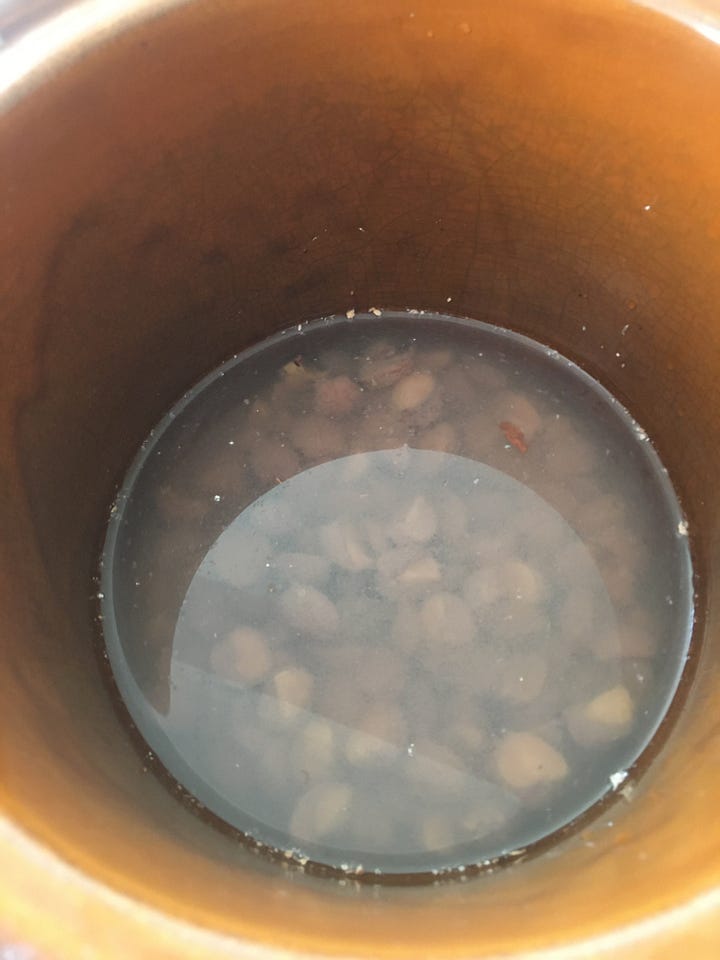
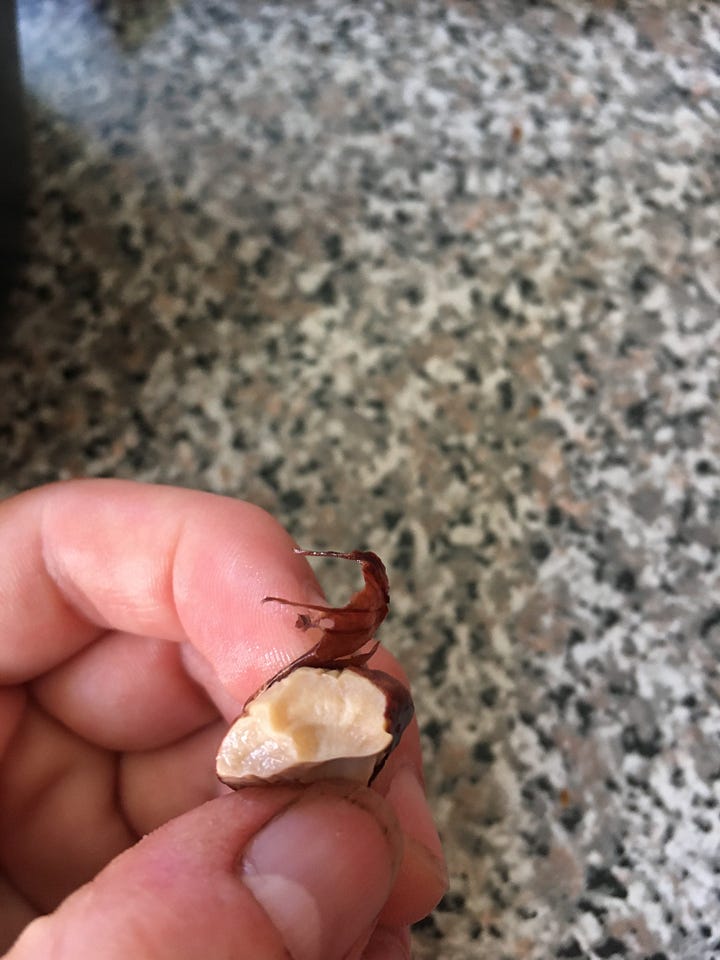
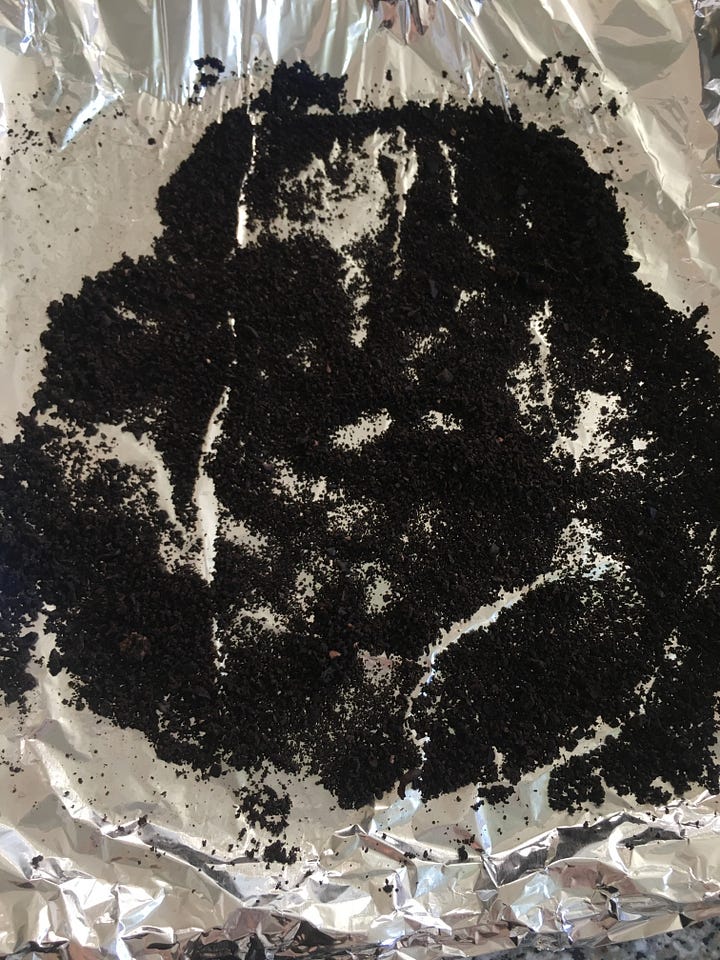
The process for this was simple; after shelling the acorns, add them to a crockpot at its lowest setting at a 2:1 water: acorn ratio. For every cup of acorns, match with 1 tsp of slaked lime. It’s important to keep the water from boiling, as it can cause the tannins to bind to the acorn. The boiling process for this batch was four hours, and the third picture shows the leeching process working its way through the acorn. It’s likely necessary to adjust the amount of slaked lime (the lye used) to the amount of tannins in the acorns. After boiling, a rinse to remove any residual lime is necessary, and then it’s possible to grind it down to flour for storage and cooking. In their experiments, working with Red Oak (which has higher tannins and likely would have taken weeks at a minimum with cold leaching), the final product was slightly bland, but a good filler flour that was storable and fairly easy to process.
Calculating the tannin levels of acorns is a difficult task, and given the history and diversity of oaks as we’ve explored, it’s no surprise that there’s no standardization, and there likely won’t be anytime soon. This can be intimidating; it’s baking with no measurements, more or less. In terms of considering calories per labor hour, nixtamalization far outweighs water leeching, and the end product is very different. Depending on who you talk to and where the acorns they’ve harvested are from, the flavors from each of these processes can vary widely, from a nutty, sourdough-like flavor profile to tasting like nothing or worse. This flavor difference is largely due to the processing, the oak variety, the climactic variances of the season, and the thoroughness in processing the nuts themselves.
But to the question of caloric gain; this graphic highlights the potential of acorns as a food crop, and one oak variety in particular stands out— the Bur oak.
For folks not familiar with the Bur oak, it is a unique variety of white oak from the central region of the United States with massive acorns with low tannins and cold tolerance. These trees were prized in the South for their massive acorns, and significantly reduce labor hours in processing acorns. They range far into the north, but their acorns shrink significantly; bur oaks in Minnesota average acorns an eighth the size of the same bur oaks of Texas!15 This interesting feature— that oaks with wide longitudinal spans tend to grow larger acorns further south— has been studied by researchers, who have managed to parse out non-factors in this interesting data, such as blaming bluejays for moving the smallest acorns, and have (in my opinion) reluctantly fallen on the vague answer of ‘environmental factors’. It would be no surprise to me if indigenous breeding work was at the core of this diversity, the same way honey locusts were selectively bred and moved north by the Cherokee (many of which are the basis for the select cultivars that have since been named after J. Russell Smith’s work to promote them).
Needless to say, the bur oak offers us a unique opportunity to explore the potential of a native tree crop that is easy to process with massive caloric production per hour, while also potentially being more palatable.
All in all, the key takeaway should be that acorns currently offer not just an opportunity to reconnect with the landscape around us through our diet but another way to build connections within our community and restore some of these communal processes. Breeding work and more experimental testing of processing offer us the potential for making acorn flour a unique flavor of our community and a rare wild food that could also find its place alongside maple syrup in providing a habitat for wildlife and nourishing food for us.
If you’ve enjoyed this piece, which is equal to a 15 page chapter, of (so far) a 593 page book with 267 sources, you can support our work a number of ways. The first is by sharing this article with folks you think would find it interesting. The second is by listening and sharing the audio version of this content (which will come out in October 2023), the Poor Proles Almanac podcast, available wherever you get your podcasts. If you’d like to financially support the project, and get exclusive access to our limited paywalled content, you can become a paid subscriber on Substack or Patreon, which will both give you access to the paywalled content, and in the case of Patreon, early access to the audio episodes as well.
Bocsi, T., Harper, R. W., DeStefano, S., & Lass, D. A. (2021). Historical and cultural perspectives of oak trees in the American Landscape. Arboricultural Journal, 43(3), 171–179. https://doi.org/10.1080/03071375.2021.1903220
Barrón, Eduardo; Averyanova, Anna; Kvaček, Zlatko; Momohara, Arata; Pigg, Kathleen B.; Popova, Svetlana; Postigo-Mijarra, José María; Tiffney, Bruce H.; Utescher, Torsten (2017), Gil-Pelegrín, Eustaquio; Peguero-Pina, José Javier; Sancho-Knapik, Domingo (eds.), "The Fossil History of Quercus", Oaks Physiological Ecology. Exploring the Functional Diversity of Genus Quercus L., Cham: Springer International Publishing, vol. 7, pp. 39–105, doi:10.1007/978-3-319-69099-5_3, hdl:10261/277765, ISBN 978-3-319-69098-8
https://www.oneearth.org/oak-trees-kings-of-biodiversity/#:~:text=Up%20to%202300%20species%20are,716%20lichens%2C%20and%2031%20mammals.
The Poor Proles Almanac, “Restoring our Native Plant Communities with Dr. Doug Tallamy” https://poorprolesalmanac.podbean.com/e/restoring-our-native-plant-communities-with-dr-doug-tallamy/
Aginsky, B. W. 1943. Culture Element Distributions: XXIV, Central Sierra. UC-AR 8:393-468.
Driver, Harold E. The Acorn in North American Indian Diet, Proceedings of the Indiana Academy of Science. Indiana University
https://www.scientificamerican.com/article/how-oak-trees-evolved-to-rule-the-forests-of-the-northern-hemisphere/
Sanger, Matthew C. “Evidence for Significant Subterranean Storage at Two Hunter-Gatherer Sites: The Presence of a Mast-Based Economy in the Late Archaic Coastal American Southeast.” American Antiquity, vol. 82, no. 1, 2017, pp. 50–70, https://doi.org/10.1017/aaq.2016.6.
Russo, Michael 2004 Measuring Shell Rings for Social Inequality. In Signs of Power: The Rise of Cultural Complexity in the Southeast, edited by Jon L. Gibson and Phillip J. Carr, pp. 26–70. University of Alabama Press, Tuscaloosa.
Gilmore, Zackary I. 2016 Gathering at Silver Glen: Community and History in Late Archaic Florida. University Press of Florida, Gainesville.
Truncer, James. “Steatite Vessel Age and Occurrence in Temperate Eastern North America.” American Antiquity, vol. 69, no. 3, 2004, pp. 487–513, https://doi.org/10.2307/4128403.
Hanson, Kelsey. “Woodland Period Rockshelter Use in the Upper Great Lakes: A Multiscalar Perspective from Grand Island, Michigan.” The Wisconsin Archeologist, Jan. 2009, https://doi.org/10.30707/etd2016.hanson.k.
Whitney, Gordon G. 1987 An Ecological History of the Great Lakes Forests of Michigan. The Journal of Ecology 75(3):667- 684.
Luzardo-Ocampo, Ivan, et al. “Impact of Cooking and Nixtamalization on the Bioaccessibility and Antioxidant Capacity of Phenolic Compounds from Two Sorghum Varieties.” Food Chemistry, vol. 309, 2020, p. 125684, https://doi.org/10.1016/j.foodchem.2019.125684.
Koenig, Walter D., et al. “Latitudinal Decrease in Acorn Size in Bur Oak (Quercus Macrocarpa) Is Due to Environmental Constraints, Not Avian Dispersal.” Botany, vol. 87, no. 4, 2009, pp. 349–356, https://doi.org/10.1139/b09-008.

